Bogotá, the Colombian capital, is consolidating itself as a space for artistic innovation and urban dialogue. All this is made possible thanks to the Bogotá Art and City Biennial.
BOG25 transforms the city into a living museum: every street, square, and building becomes a stage where artists, curators, and audiences meet to explore multiple expressions of contemporary art. From installations and painting to sculpture, photography, and interdisciplinary projects, the Biennial invites everyone to experience the city as a vast laboratory of aesthetic and social encounters.
Welcome!
The City as Protagonist of the Bogotá Art and City Biennial
Bogotá is not just the setting of BOG25; it is the artwork itself. Every corner contains stories that converse with the creations of the artists, thus transforming the city into a living museum.
In this way, the city becomes a dynamic canvas where the urban, the historical, and the contemporary intertwine, allowing both residents and visitors to experience art as part of daily life.
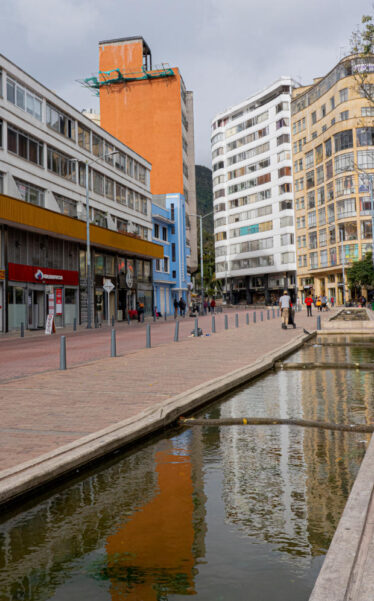
The Bogotá Art and City Biennial recognizes the city not as a backdrop but as an active protagonist.
The Eje Ambiental is the true heart of BOG25.
Artistic interventions blend with everyday life, creating a constant dialogue between past, present, and future while addressing themes such as mobility, historical memory, sustainability, and urban growth.
The Eje Ambiental, the heart of BOG25, is the place where city and art come together. Designed by Rogelio Salmona, this corridor was once Avenida Jiménez and, long before that, the bed of the Vicachá River.
Today, its pedestrian paths, framed by historic buildings and green areas, host more than one hundred works by national and international artists. The result is a journey where history, architecture, and artistic creation engage in perfect harmony.
Walking along the Eje Ambiental reveals the silent presence of water that still flows underneath, an echo of the river that once crossed this place. It is a liquid ghost that connects with the imposing eastern hills—images reminding us that the capital is built from memory and transformation.
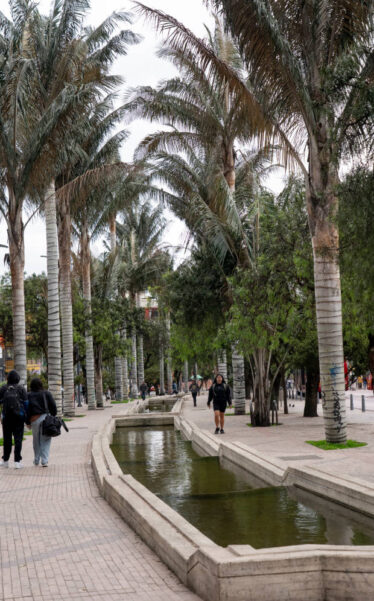
In this space, the Biennial unfolds as a great urban laboratory: for almost one kilometer, art takes over public space and unconventional venues, inviting residents and visitors to live a unique encounter between city, artists, and community.
However, the Biennial is not limited to the Eje Ambiental.
Firstly, the Bogotá Archive opens its halls as a space where documentary memory converses with contemporary installations, evoking the city’s urban history.
Secondly, the National Library, with its solemn silence, fills with light and projections, blending literature, sound, and visual experiences that celebrate written culture.
Thirdly, the Cinemateca Distrital transforms its theaters into stages for screenings, performances, and audiovisual art that engage with the history of Colombian cinema and urban life.
Finally, the Palacio de San Francisco, with its colonial architecture, becomes a bridge between eras, hosting contemporary installations that dialogue with its historical past.
Public spaces like Parque Santander and Plazoleta del Rosario invite passersby to participate, play, and discover art in the midst of the city.
Meanwhile, Parque de los Periodistas, with its sculptures and urban paths, transforms into a community gathering point where artwork and spectators coexist.
The Colombo-French Alliance offers gardens and halls full of educational activities and exhibitions, strengthening international cultural exchange.
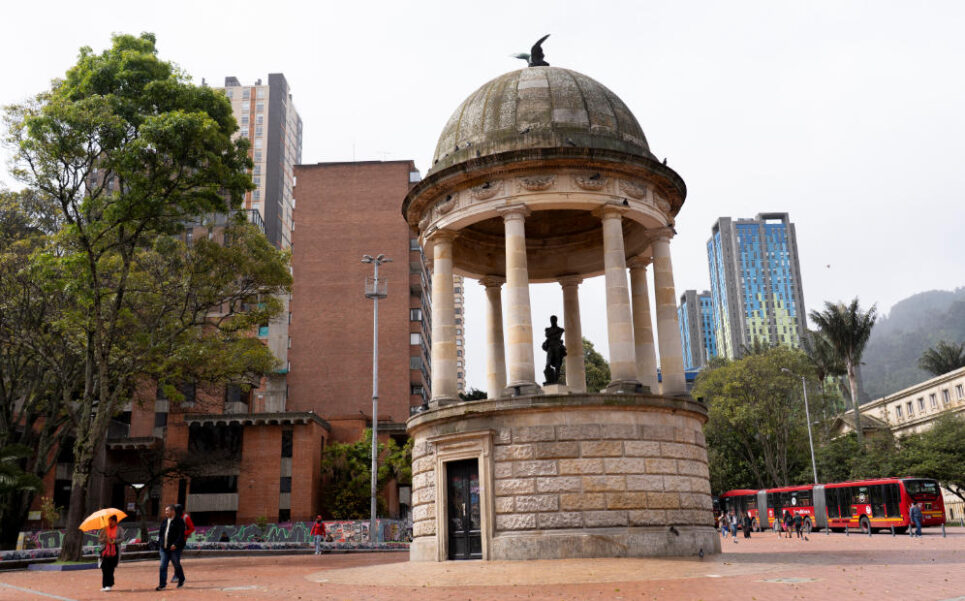
Universities and cultural centers also join as satellite venues, bringing art closer to young people and fostering creativity in learning environments.
This means that every corner of Bogotá becomes a stage, and every passerby becomes both spectator and participant.
A Museum Under the Open Sky
From September 20 to November 7, the Bogotá Art and City Biennial turns the capital into an open-air museum.
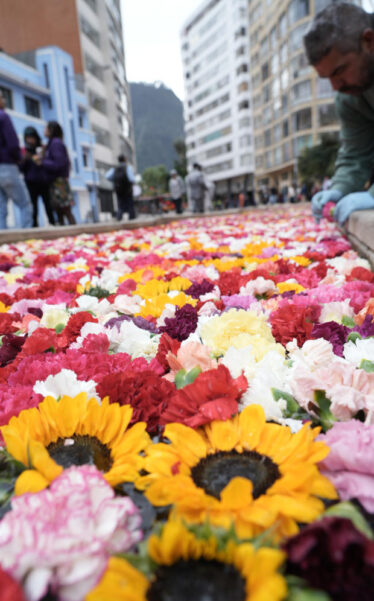
It is not only about visiting traditional venues like the Bogotá Archive, the National Library, or the Cinemateca. Furthermore, it means discovering how every urban corner comes alive with creativity.
Emblematic spaces such as the Palacio de San Francisco, Parque Santander, Plazoleta del Rosario, Parque de los Periodistas, and the Colombo-French Alliance are reinvented as exhibition venues. Moreover, in each of these places, the works converse with history, architecture, and the city’s inhabitants.
Each intervention invites passersby to stop, look, listen, and participate. Therefore, it becomes clear that any street corner can become a gallery and, consequently, any person a co-creator of art.
In addition, the Biennial is free of charge. This ensures full access to exhibitions, interventions, academic activities, workshops, talks, guided tours, and even social and musical events. As a result, art is democratized and brought closer to everyone—families, students, tourists, and citizens of all ages are invited to experience Bogotá in a new way.
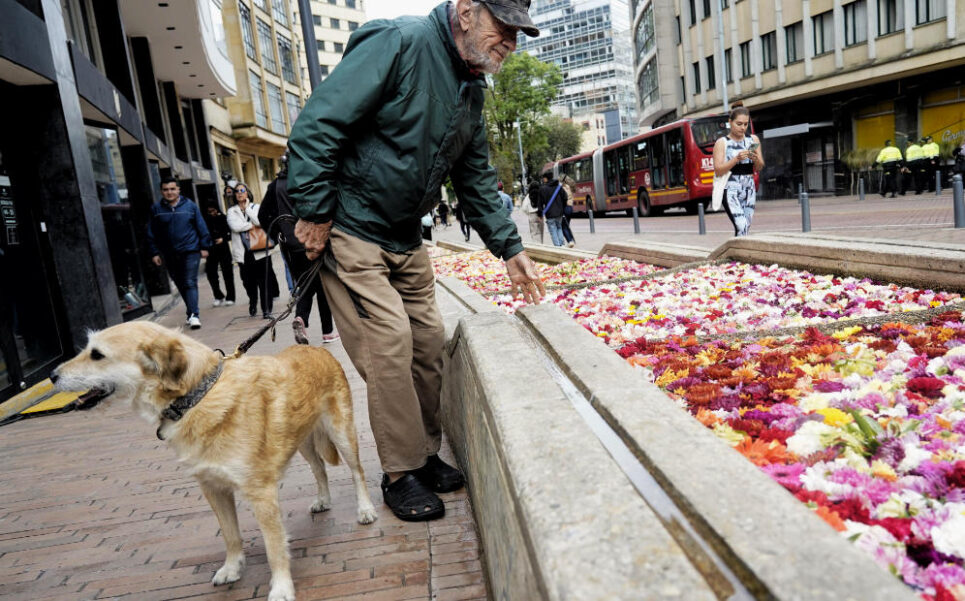
Finally, the streets, history, and people of the city become part of the artwork itself. Art does not remain confined to museums: it transforms everyday life, sparks reflection, and generates unexpected encounters. Bogotá becomes a creative laboratory, a space where past, present, and imagination intertwine, and where every citizen has the chance to discover, be surprised, and take part in the artistic story being written in its streets.
Artists and Featured Works
A very important factor to take into account is that the Bogotá Art and City Biennial brings together more than 200 artists from 12 countries, selected by a curatorial committee.
Their works include installations, sculpture, painting, photography, interactive technology, and interdisciplinary projects, transforming the city into a laboratory of artistic experimentation.
Some of the artists participating are:
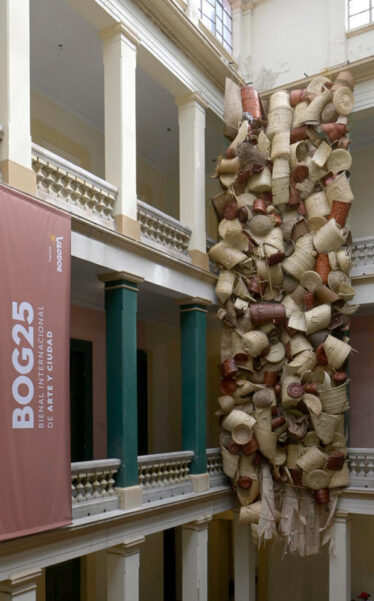
** Clemencia Echeverri (Colombia). She studied Visual Communication at the Pontificia Bolivariana University and Fine Arts at the University of Antioquia. Work in the biennial: “Infantes al volver.” With this project, she seeks to raise awareness and mobilize mothers affected by forced child recruitment and support them in expressing their solidarity and concern for children and adolescents. The project aims to give voice to women who demand support and attention to the survival of their families.
** Federico Ovalles (Venezuela). In his works, he contrasts dissimilar materials to create assemblage pieces and installations that reference architecture in a fragile or provisional way, constructing geometries on fabrics or natural fibers and using materials found in the city. Work in the Biennial: Craft Study on a Modern Deconstruction. An intersection of matter, memory, and territory. Through his objects and installations, Ovalles explores processes of transformation and precarity in urban and social contexts.
** Adrian Gaitán (Colombia). An artist from Cali who deconstructs symbols of high culture to reconstruct them with recycled and everyday materials. Born in Cali in 1983, his work challenges the concept of “good taste” and explores the tension between luxury and precariousness. He uses elements such as cardboard, motor oil, and mattresses.
** Rejane Cantoni (Brazil). She has been invited to create works in several cities around the world and develops site-specific installations that provide visceral mediations on how individuals perceive and communicate in the spaces they inhabit. Cantoni holds a postdoc in Arts from the University of São Paulo and has exhibited internationally. Work: We_Agente, an in-situ installation in Parque Santander, which translates urban sounds into aquatic visual patterns. Her work seeks to rescue the memory of the Vicachá River, combining nature and city.
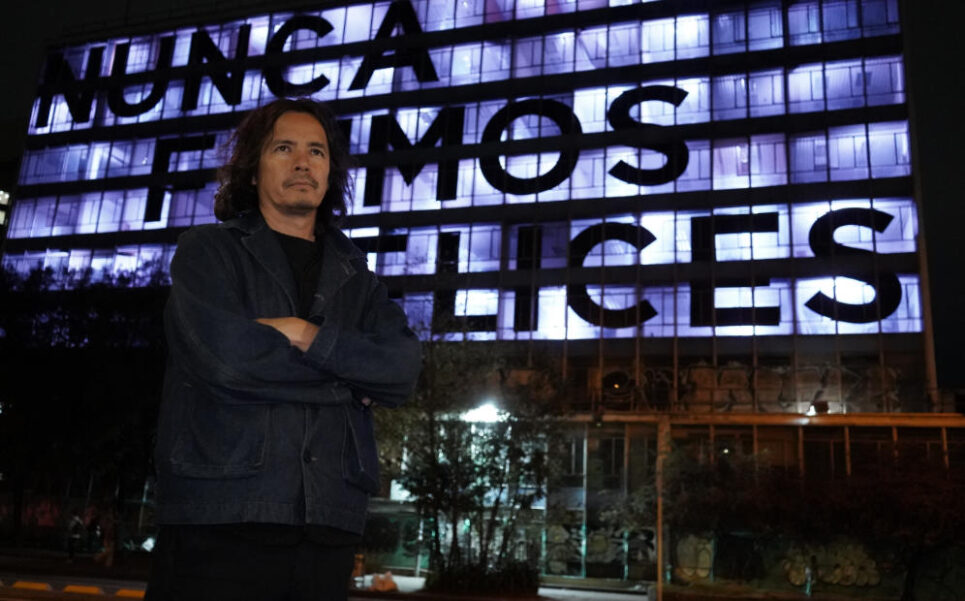
** Iván Argote (Colombia). He lives and works in Paris, France. He is known for exploring the relationships between history, politics, and the construction of subjectivities. His videos, sculptures, collages, and public installations address relationships, power, and heritage, challenging notions of monument and monumentality with tenderness and humor. Work in the biennial: Dándole peso a unos besos in Plazoleta del Rosario. A six-meter monolith covered with thousands of kisses, inviting collective participation.
** José Carlos Martinat + Taller Paralelo Arquitectos (Peru / Colombia). One of the most internationally recognized Latin American artists of his generation. He creates multimedia installations and sculptures that incorporate everyday materials and virtual worlds. Fascinated by interactive technology, his work encourages the spectator’s physical interaction. Work: Nunca fuimos felices at the CAR building. An installation with vinyls and lights that questions happiness in urban life, revisiting Alfredo Jaar’s historic work.
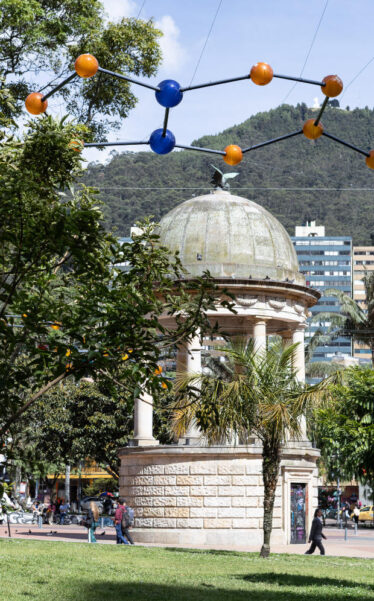
** Glenda León (Cuba). Her work ranges from drawing to video art, including installations, objects, and photography. She is interested in the intersections between the visible and the invisible, sound and silence, the ephemeral and the eternal. Work: Cielo Prohibido in Parque de los Periodistas. An installation mapping formulas of psychoactive substances, questioning social prohibitions and reflecting on well-being, mind, and body. This piece clearly references drugs, using it as a symbolic resource to question established social orders that are often contradictory and hypocritical.
** Leandro Erlich (Argentina). His work lies at the intersection of art, architecture, and optical illusion, challenging our relationship with everyday spaces and the perception of reality. Through immersive and interactive installations, he creates scenarios that disorient, invite play, and provoke reflection. Work in the biennial: Pulled by the Roots in Plaza de Lourdes. A house suspended in the air, representing the illusion of property and the displacement of traditional neighborhoods due to urban growth.
** John Gerrard (Ireland). Works on sculptures that usually take the form of digital simulations. He is recognized for his installations where images are generated in real-time before the spectator’s eyes. Work in the biennial: Surrender (Flag), 2023, video script in a scaffold and glass cube.
** Vanessa Sandoval (Colombia). A visual artist working in sculpture, performance, drawing, and installation. Work: Semilla in Parque de los Novios. An adobe installation with an interior tree, adapted to Bogotá as a cold-climate city, reflecting on the relationship between nature and city.
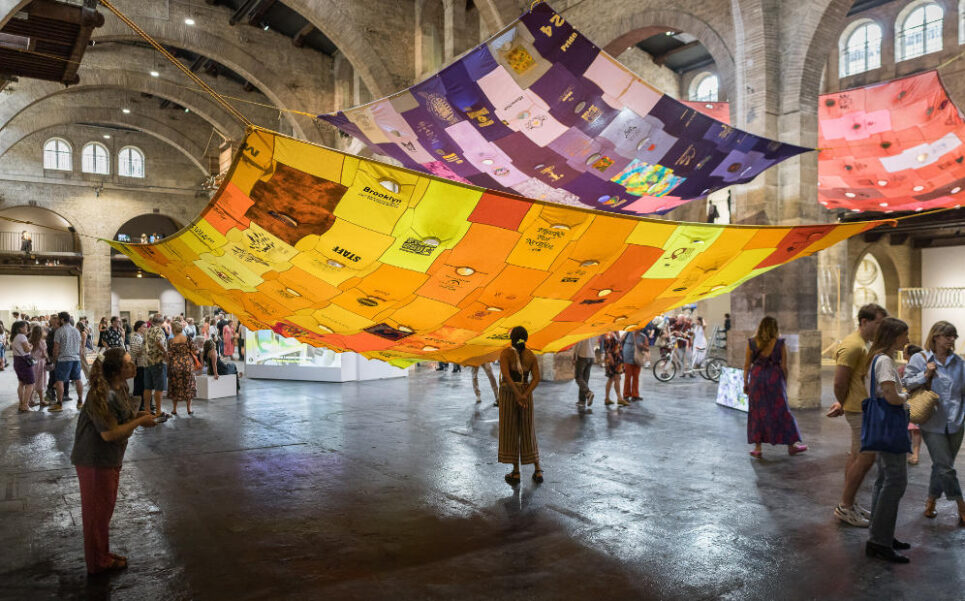
** Héctor Zamora (México). An artist who meticulously emphasizes the process of conceptualizing and constructing each piece. Zamora questions the everyday uses of materials and the potential functions of space. Work in the biennial: Escenario Hídrico in the ICFES building. An intervention with blue canvas and collective performance that recalls the water bodies that shaped the city, combining architecture and nature.
** Pía Camil (México). Her work often develops in a climate where kinship and affectivity are proposed as a radical way of working. Her themes focus on rural and urban contexts, maintaining a formal yet critical dialogue with modernism. Works in the biennial: Bara, Bara, Bara (Yellow Pirate Divider), 2017 and Bara, Bara, Bara (Blue Pirate Divider II), 2017. A large-scale textile installation made from t-shirts bought in street markets in Iztapalapa, Mexico City.
Each work dialogues with Bogotá, resignifying spaces and showing how art can transform the urban experience. The Bogotá Art and City Biennial allows the city to be seen through the eyes of its national and international artists, preparing the ground for Mexico’s participation as guest of honor.
Guest of Honor: Mexico City and Five Women Artists
Mexico City arrives at BOG25 as the guest of honor, carrying with it an artistic tradition that has left a mark on Latin America and the world. Its legacy ranges from muralism to contemporary art, with a richness that combines history, memory, and creativity.
In this first International Art and City Biennial of Bogotá, five Mexican women artists represent that cultural force, demonstrating how art can connect cities, generate dialogue, and highlight gender equity in artistic creation.
The goal is to contribute to gender equity and guarantee social justice and equal opportunities for women in art and culture.
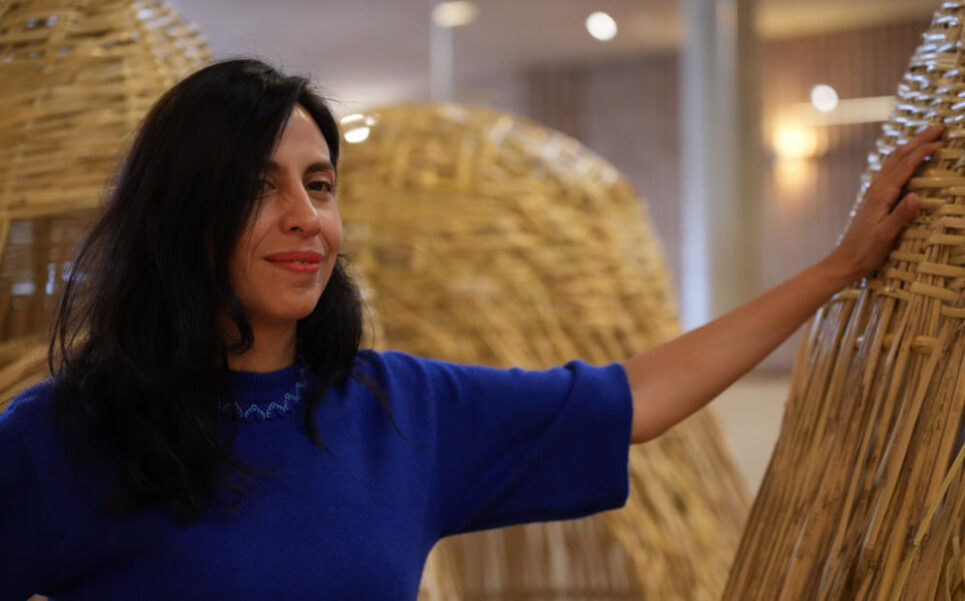
The alliance between the two countries focuses on projects that will resignify public space, transform the urban landscape, and moreover promote reflections on the relationship between art and citizenship.
In fact, Mexico is the guest of honor for its artistic tradition that has influenced Latin America and the world. From muralism to contemporary avant-garde, Mexican creativity has transcended borders and, as a result, is reflected in the diversity of its artistic expressions.
Finally, five women represent Mexico City at BOG25, thereby highlighting gender equity as well as cultural cooperation.

Amaranta Almaraz and the Nuuch Collective. Amaranta is an industrial designer, art director, and founder of Nuuch. Work: Latido de la tierra. Monumental textile sculptures that evoke ancestral memory and the founding of Mexico-Tenochtitlan. Almaraz has worked at the Venice Biennale and the Mega Monumental Offering in Mexico City’s Zócalo.
Ali Gua Gua – Cumbia Ciudad. A former member of Las Ultrasónicas and Kumbia Queers, she combines electronic music with the Bogotá Philharmonic Orchestra in a performative concert that intervenes in public spaces.
Mónica Mayer. A renowned visual artist, writer, and activist. Her career spans over four decades dedicated to conceptual art and performance, establishing her as a leading figure in contemporary feminist art. She studied Visual Arts at UNAM’s National School of Visual Arts and obtained a Master’s in Sociology of Art at Goddard College, Vermont. Her work has been exhibited in prestigious spaces such as the Museum of Modern Art in Mexico, the Smithsonian American Art Museum, and the Venice Biennale. Work: Soy tan, pero tan vieja. An installation questioning stereotypes about female aging, using acrylic modules with social media phrases.
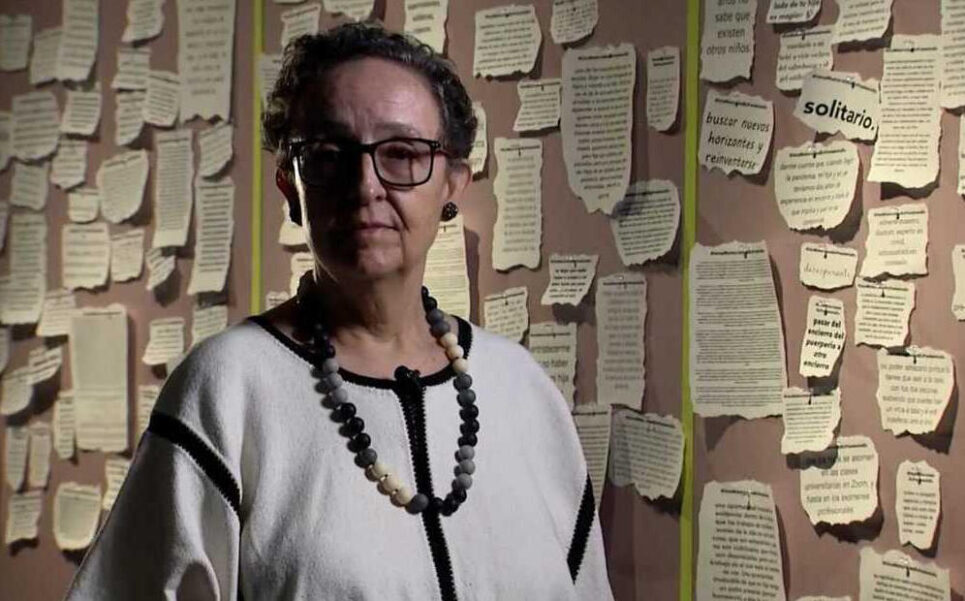
Pilar Cárdenas – Fusca. Her work is continuously influenced by the Mexican muralist tradition. Work: El camino del oro. A mural project inscribed in the tradition of muralism as resistance, both in Mexico City and Bogotá. Her visual and sensory proposal envisions a collective reconfiguration through desire and spirituality, using light as a stratified reading element.
Yunuen Díaz. An artist, writer, and gardener. She combines her poetic projects with installation work. Work: Nidos de lectura. Human-sized reading nests woven for interaction, combining Mexican and Bogotá literature and promoting engagement with public space.
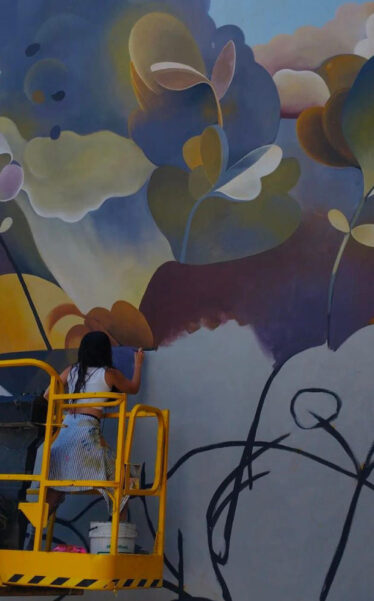
Through their interventions, murals, installations, and performances, these five Mexican creators not only present works, but also transform Bogotá into a living stage of cultural dialogue.
Moreover, each of them, from her own perspective, opens space for collective reflection and exchange between two cities that share history, struggles, and dreams. In doing so, their proposals invite us to walk through the capital with new eyes, recognizing how art can transform the everyday into an act of memory, resistance, and hope.
Furthermore, from the evocation of ancestral roots to literary, sound, and visual experimentation, their works celebrate Mexican creativity while at the same time engaging in dialogue with the richness of Bogotá’s public space.
As a result, in this encounter, the boundaries between spectator and participant blur. Thus, the Biennial not only pays tribute to the creative force of these five women, but also underlines the importance of transnational cooperation and the role of art as a bridge capable of uniting territories, sensibilities, and communities.
The Curatorial Axis: Essays on Happiness
First, it is important to understand what a curatorial axis is. A curatorial axis is the conceptual heart of a biennial. It is the framework that guides the selection of works and artists, defines the themes that are addressed, and, in addition, allows each project to dialogue with others, with the city, and with the public.
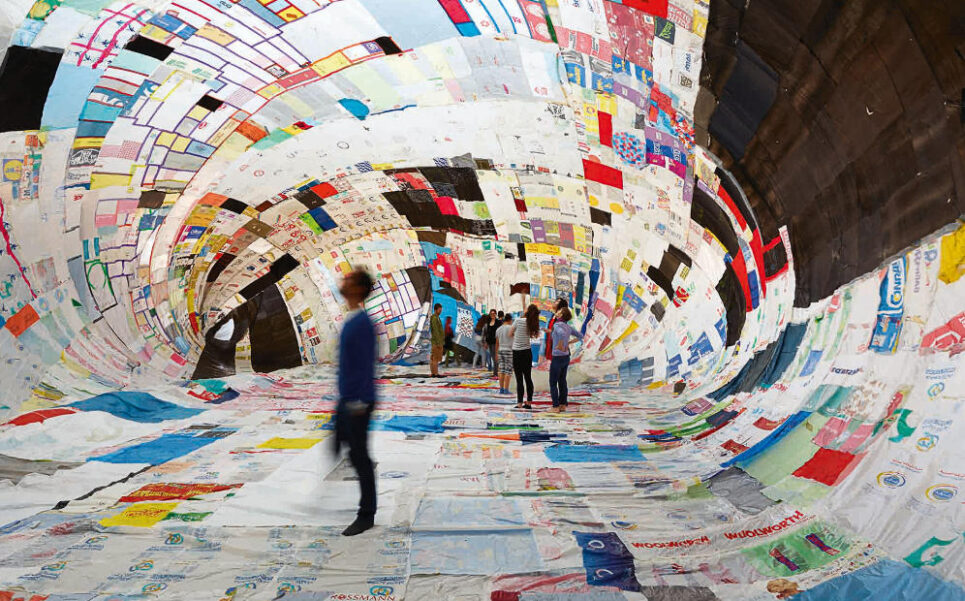
In other words, this axis gives meaning and coherence to the exhibition, transforming a diverse set of works into a common narrative that invites reflection, questioning, and emotion. Thus, each visitor can follow a thread that connects the artistic interventions to one another and to the urban environment.
At BOG25, the axis is titled “Bogotá: Essays on Happiness” and proposes exploring happiness not as an abstract ideal, but as a complex and collective experience, shaped by urban life, social tensions, and the city’s constant expansion.
The axis then unfolds through several subthemes, which guide both the audience’s perspective and the artists’ creativity:
Radical Leisure: celebration, play, and collective action become acts of resistance against hyper-productivity. Here, enjoyment is not trivial: it is a gesture of freedom that restores the human dimension to time.
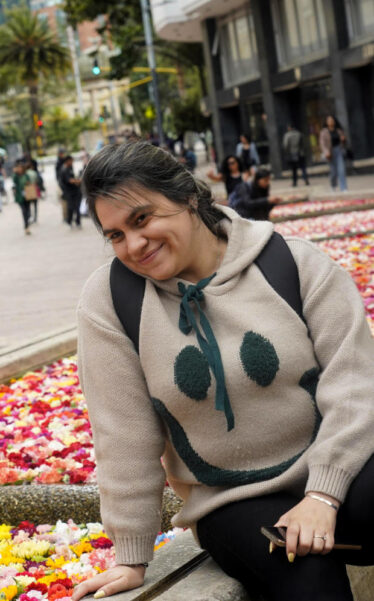
Environmental Esotericism: explores artificial paradises, altered states, and processes of healing, inviting contemplation of the relationship between body, mind, and environment.
Stratigraphy: analyzes segregation and social strata that structure the city, reminding us how urbanization conditions our lives and relationships.
Cold Land: Bogotá, as a cold-climate capital in a tropical country, reveals unique ecosystems and environmental challenges that affect daily life.
The Promise: the city as a place of welcome, hope, and aspiration for a better future for those who inhabit it and those who arrive in search of opportunities.
Toxic Optimism: questions the commodification of happiness through self-help literature, reflecting on the social pressure to be happy.
Childhood: childhood is examined between idealization and vulnerability, reminding us that happiness is also built through the protection and imagination of the youngest.
Thanks to these sub-axes, the Biennial transforms Bogotá into an urban laboratory where art, history, culture, and everyday life intertwine. Each artistic intervention, installation, or performance then becomes an essay on how the city can teach and reflect forms of well-being and shared meaning.
Therefore, this curatorial axis not only organizes the Biennial but also invites visitors to see the city with new eyes. In this way, Bogotá becomes the protagonist: every street, plaza, and building enters into dialogue with the works, and every spectator becomes part of a collective experiment on happiness. Ultimately, “Bogotá: Essays on Happiness” reminds us that the city is much more than a physical space: it is a living organism that inspires, challenges, and sustains the pursuit of well-being for those who inhabit it.
Conclusion
In short, the Bogotá Art and City Biennial is much more than an exhibition. It is an urban laboratory that transforms the city into a living museum. Through the interaction of local and international artists—and five outstanding Mexican women creators—a constant dialogue is established with history, architecture, and urban nature.
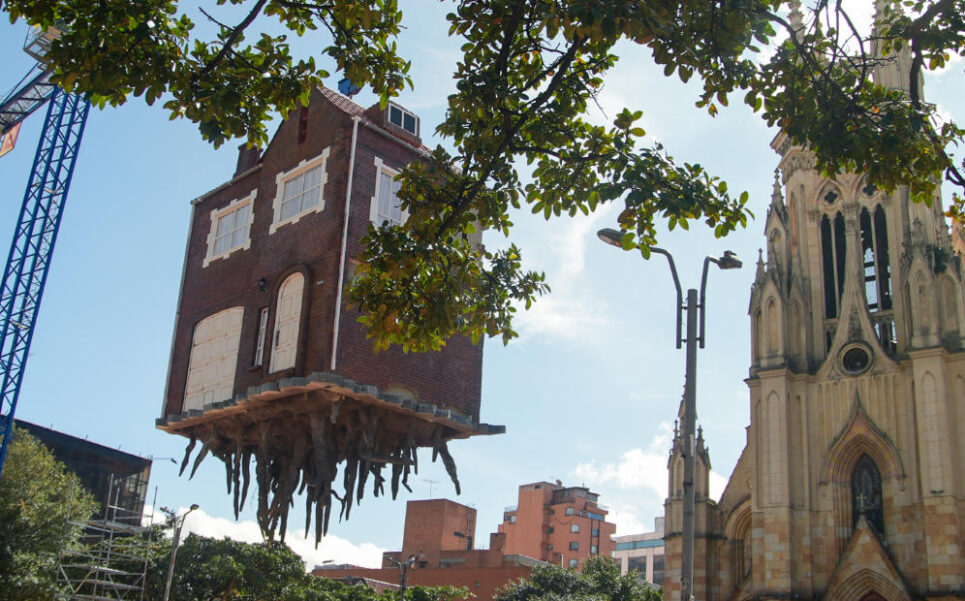
Bogotá invites citizens and visitors to live the city as never before: a stage of creativity, memory, and possibility, where art and everyday life intertwine to imagine collective futures.
Finally, BOG25 demonstrates that the city itself is the protagonist, and that every work, intervention, and step along its streets forms part of an experience that will remain in everyone’s memory.


